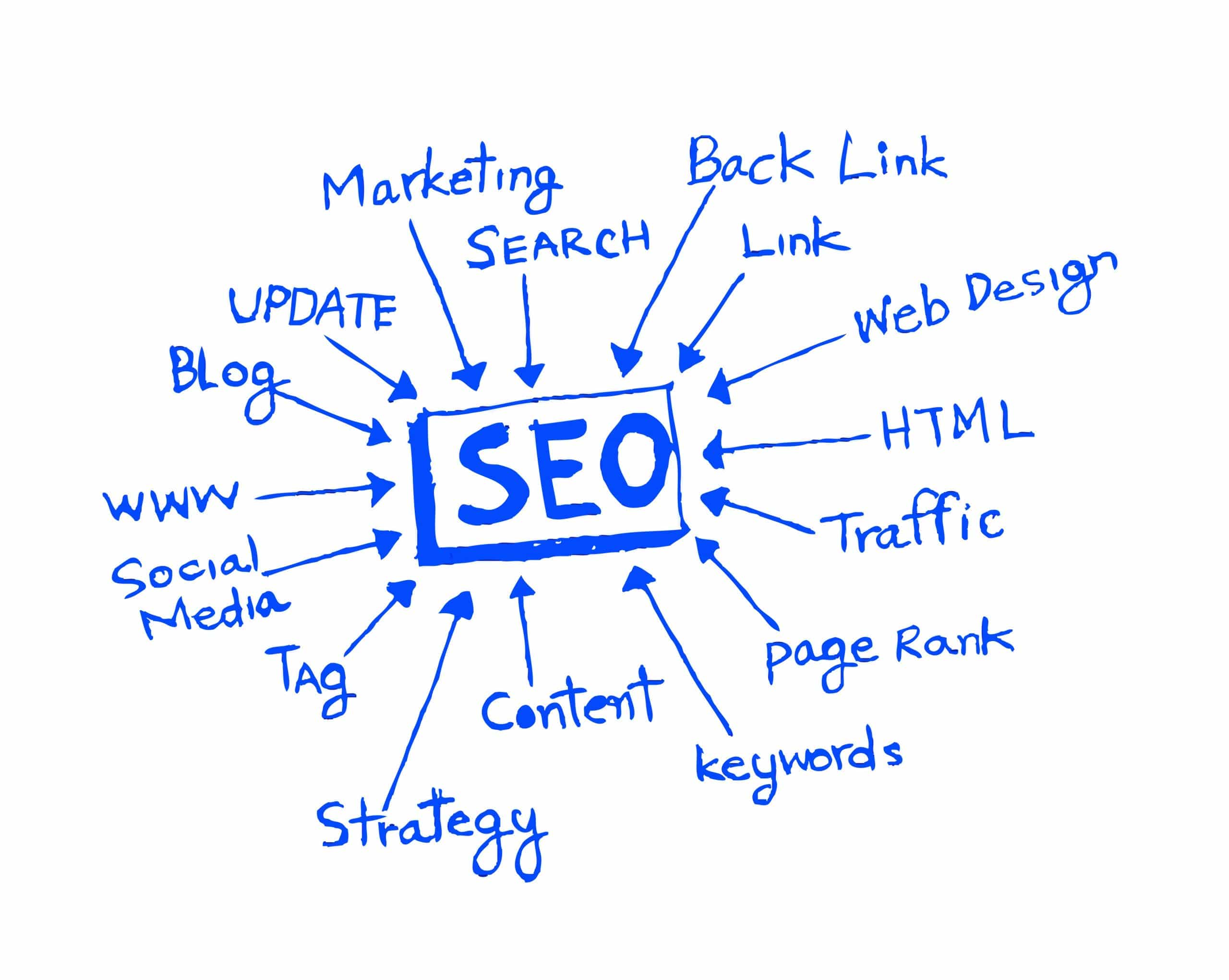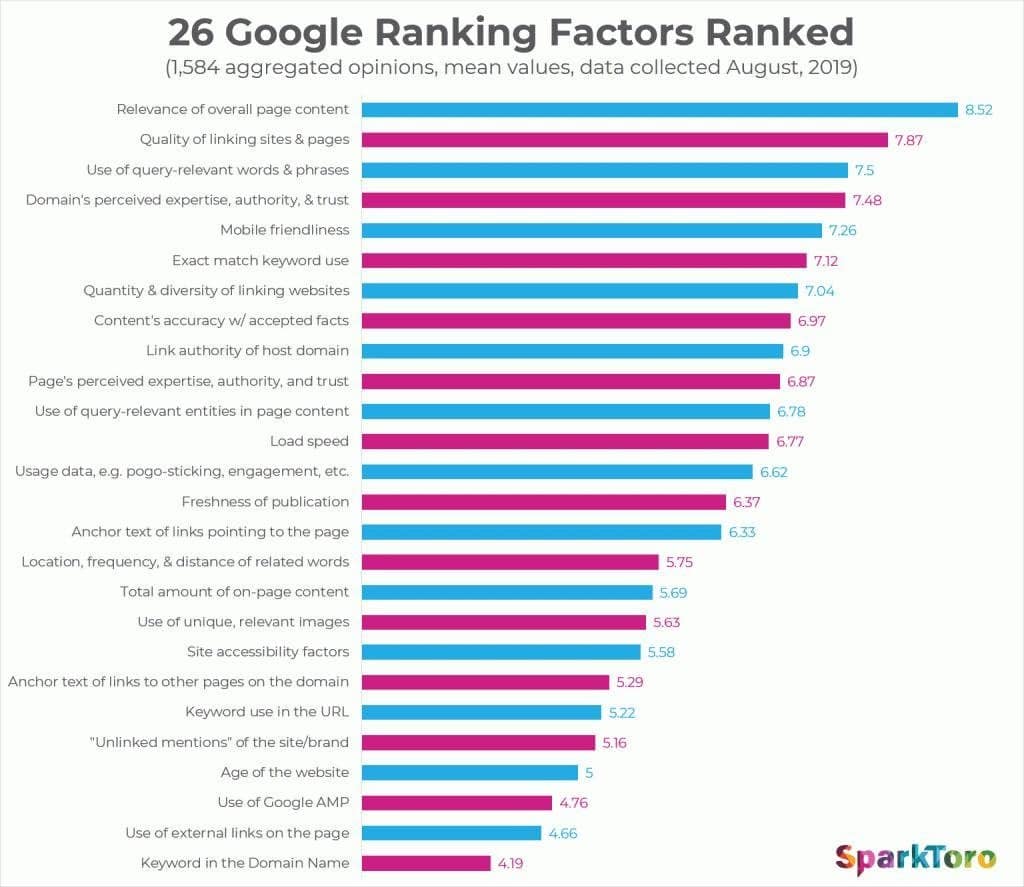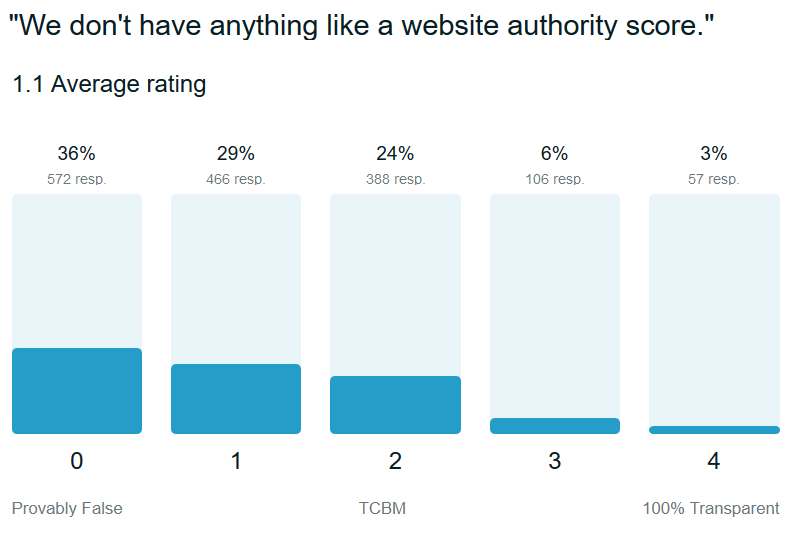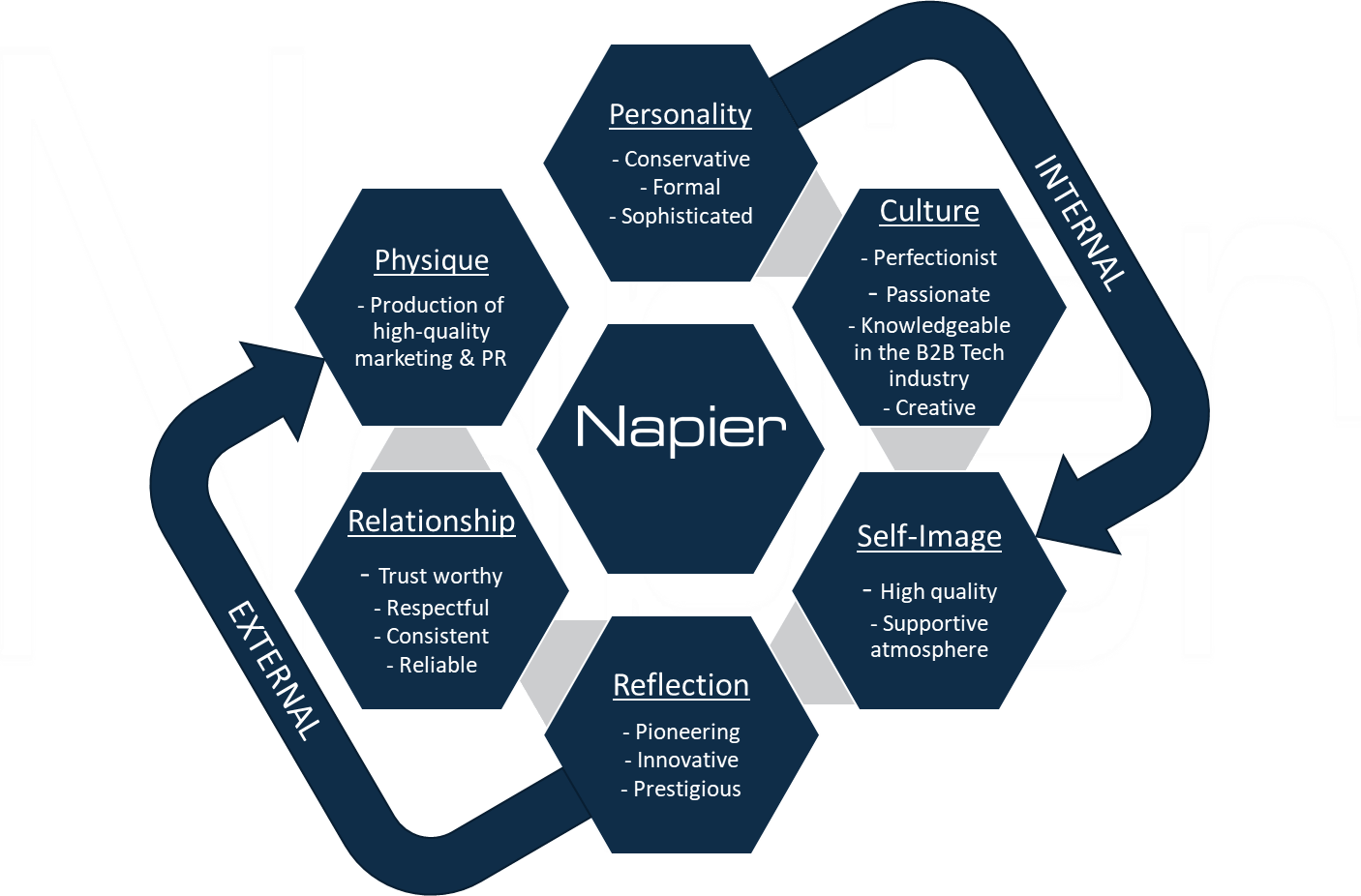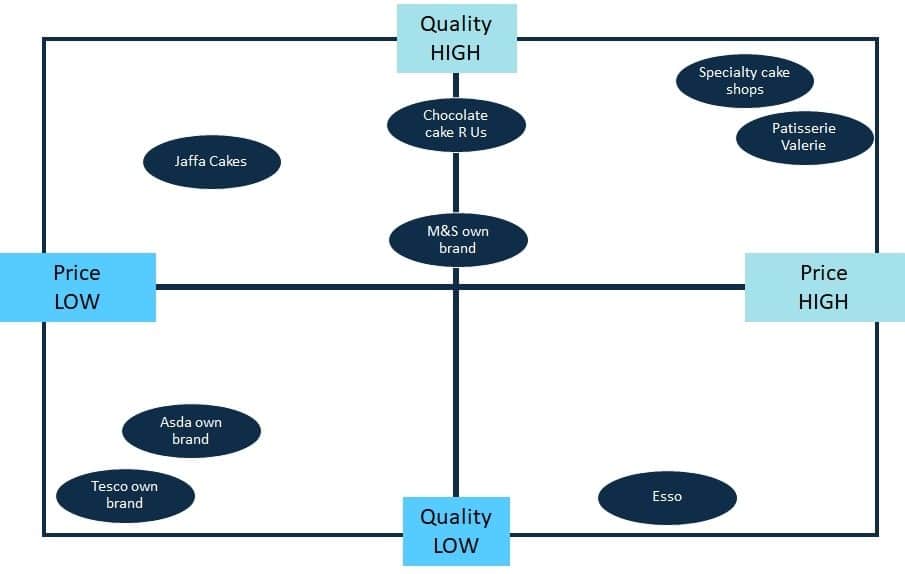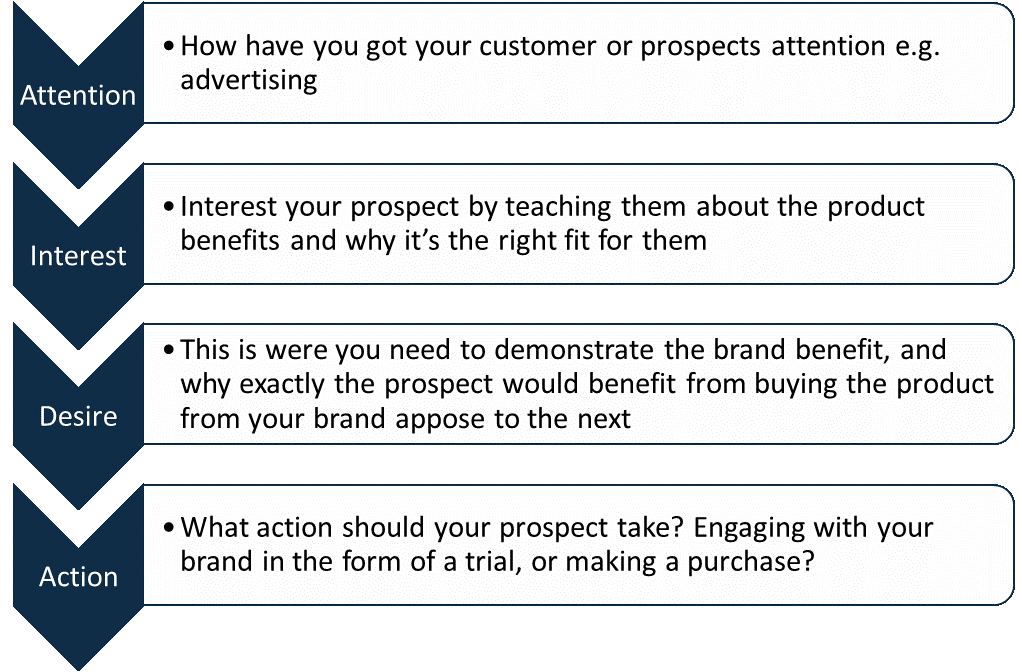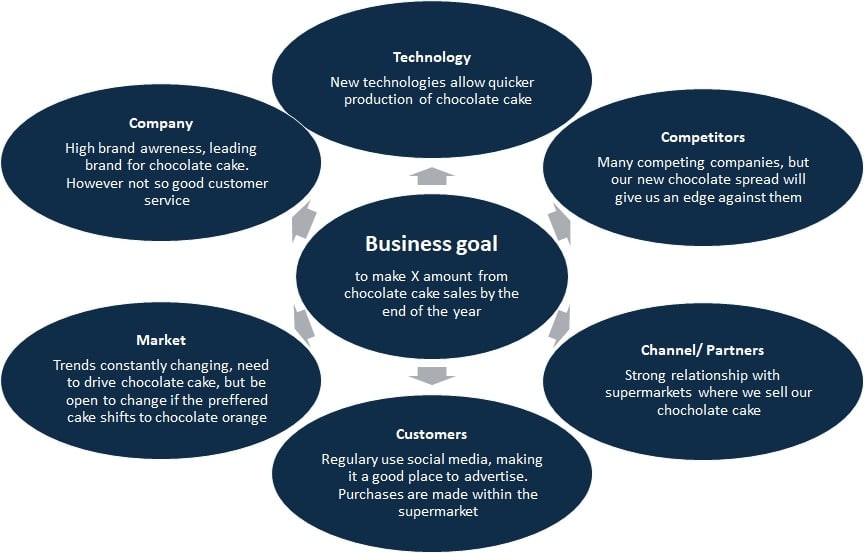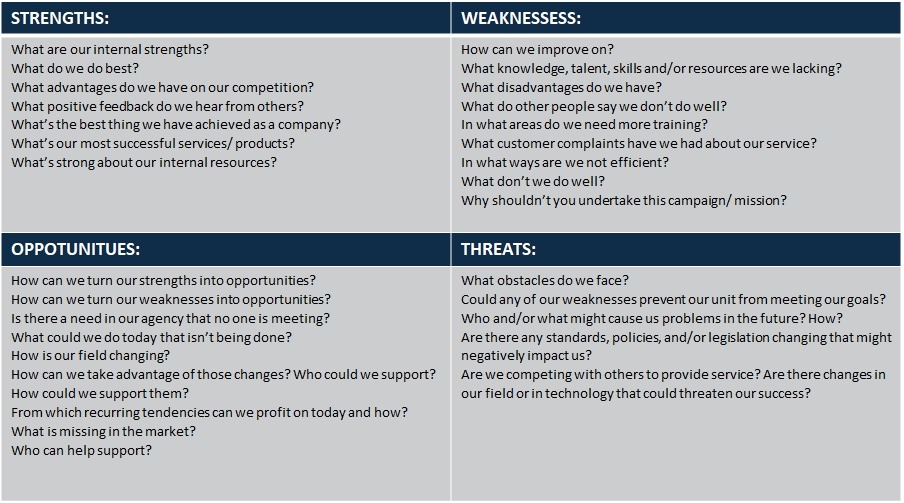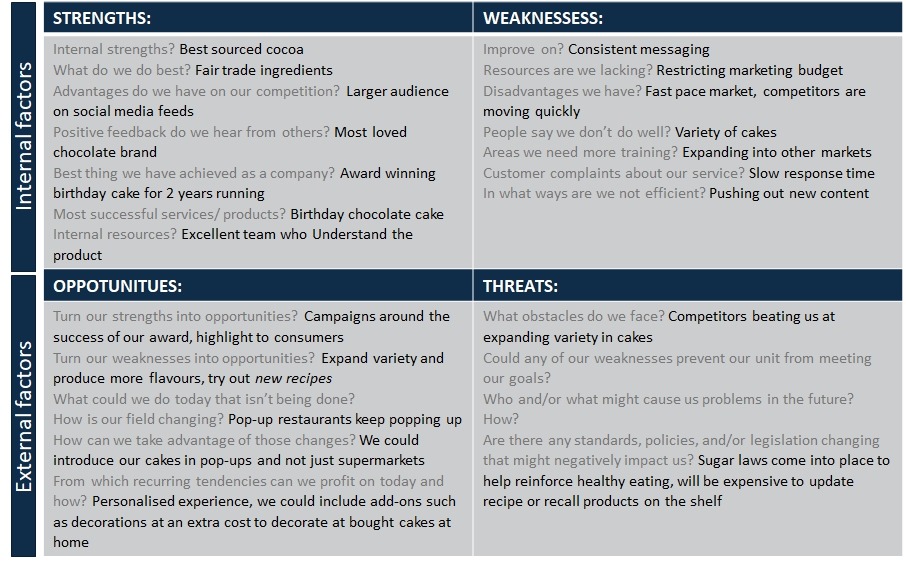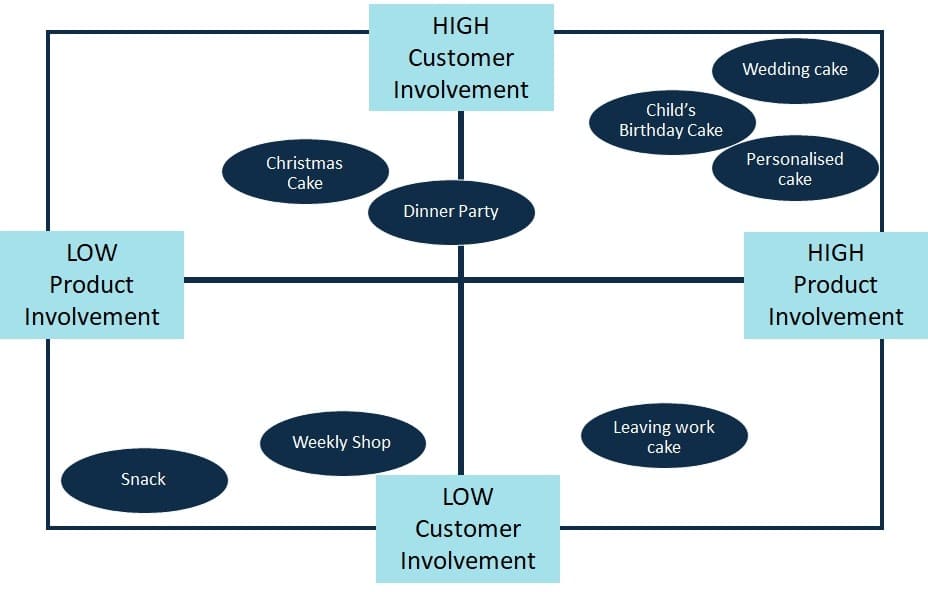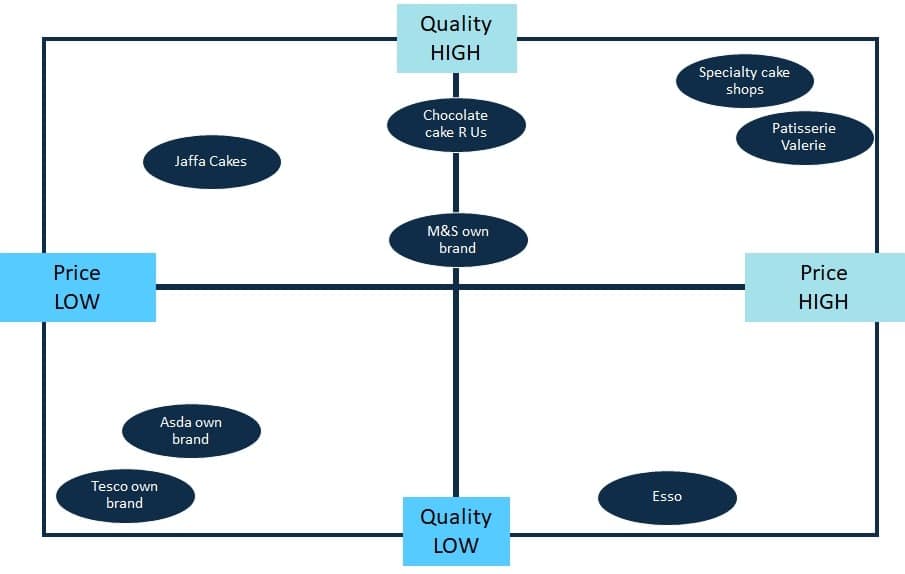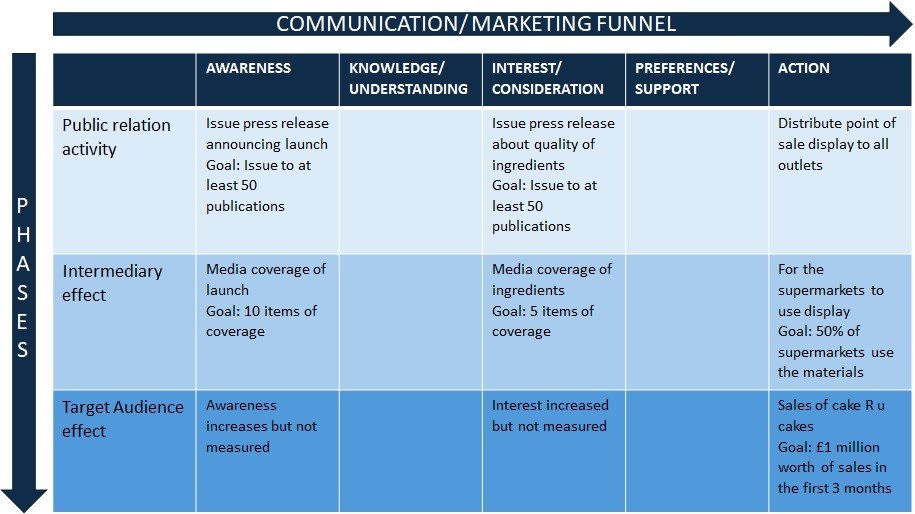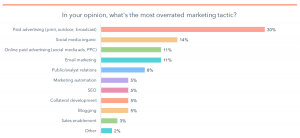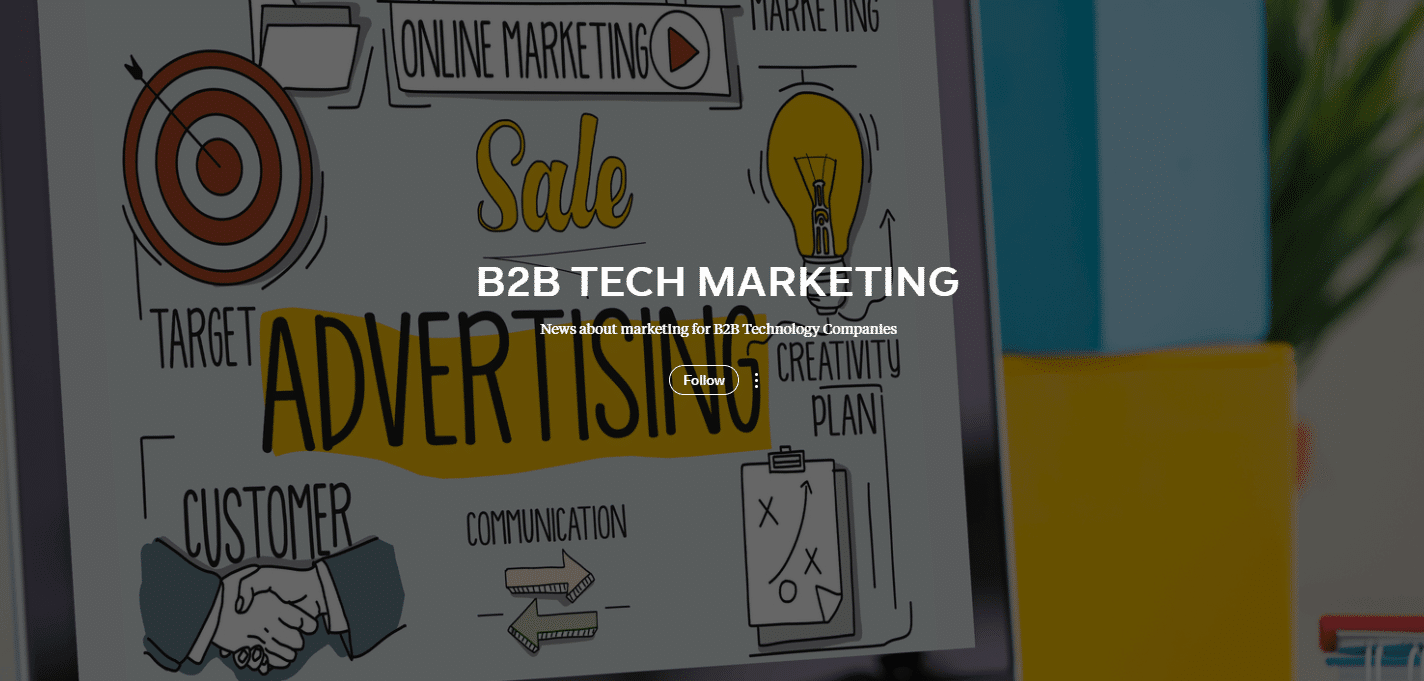ABM... A Sales Solution?
Account-based marketing (ABM) has always been considered to be a marketing tactic, but in recent years we are uncovering how it can be used as a sales solution too.
As marketers, we’ve understood the value in collaborating with sales to achieve the best ABM results, and now that sales have got a taste of the potential of ABM, it seems as if sales are starting to use ABM to achieve their own goals.
Where is the boundary between marketing and sales?
There have been some clear lines between sales and marketing in the past, after Hubspot introduced their infamous ‘smarketing’ the lines became a little blurred. One thing to get straight is that we are all working towards the same end goal, to get more customers. If we can combine our insight, that’s what business success looks like.
Let’s review some definitions to understand the difference between sales and marketing alignment, and sales enablement, because you’re not alone in thinking… what exactly are they and what’s the difference?
- Sales & Marketing Alignment: The structural and philosophical positioning of sales and marketing to define and facilitate mutual success, driven from the top of the funnel down to the bottom.
- Sales Enablement: The activity of providing the materials, insights, guidance, or any other material that is needed support the prospects experience. This might include content, training, customer insight, apps etc.
The reason why many people are struggling to grasp what they mean is because they’re concepts and mean different things to a lot of people. Essentially, sales and marketing alignment is when they come together for mutual success such as qualified leads, and sales enablement is all about improving the experience of the prospect through providing valuable information.
So why are sales teams turning to ABM?
Since COVID there’s been a huge uptake in ABM from sales teams as they are no longer on the road travelling and meeting potential customers. This is the direct sales solution for not being able to get out and meet prospects.
Another reason why sales are turning to ABM is due to how targeted it is, tools such as LinkedIn allow you to focus on specific job titles within target companies and serve those prospects with tailored content that engages. Sales are using ABM to warm up the leads with relevant content before picking up the phone, kind of sounds like sales enablement… right? Maybe the outcome of COVID is that sales are investing their time that would have been spent at trade shows/events connecting with potential customers on sales enablement activities.
What about late adopters…? How to convince sales on ABM as a sales solution
When you ask a sales rep what they want they will typically say they want
- Customers to know they are credible
- The optics of how the deal looks to the rest of the business and understanding of how to make their solution look like the right decision
- Large reach of important stakeholders
- Business perception from the prospect
- Unity of bringing people together and promoting success stories
Sales and marketing are often saying the same things, just using different words. Credibility and perception instead of brand. Reach and optics instead of awareness. If marketers can switch their language, it can really help to successfully engage sales.
What makes ABM a good fit for sales?
What I love about ABM is that it’s constantly evolving, I also talk about how ABM likes to shift shape and take different forms in my blog ABM – Where are we now?. ABM is evolving into a strategy that sales teams are wanting to adopt, I’ve had many client calls where we deal directly with sales teams on how we can support them with ABM.
Commonly, sales teams want to get the contact details of target accounts/prospects they haven’t been able to secure in the past. Sales teams are more interested in getting the contact details of the people that matter in an organisation and being able to personally follow up with them, whereas marketing teams are more interested in getting leads in the database for nurturing.
I’ve noticed that when you get sales onboard and they see the opportunity with ABM, they really want to use it to its full potential. For sales, this means putting more focus on the big wins and maybe going for one to four companies at a time while tailoring ABM campaign messaging to each pain point you know they are experiencing. In marketing terms, we’d call this a hyper targeted approach.
Maybe this is the era of marketing and sales truly working closely together to produce effective ABM campaigns.
ABM – Where Are We Now?
It’s safe to say that Account-Based-Marketing (ABM) is now an embedded strategy in the B2B space and that it isn’t going anywhere. ABM likes to shift shape, taking many forms including account-based-marketing, account-based-everything, and account-based-sales. Whatever name you choose to call it, they are essentially the same thing and is something you should be looking into it if you’re not already utilising it.
I recently attended an ABM conference in which the strategy was referred to as flipping the marketing funnel upside down, and that’s because ABM fundamentally flips the funnel on its head and allows you to focus marketing budget and resources on high-value accounts.
ABM is taking B2B strategy to a whole new level, some professionals are even saying that the future of B2B marketing will only be account-based… I’ll let that sink in. As a marketing agency, we are seeing a growing number of clients run more ABM campaigns and organisations hiring dedicated Account-Based-Marketing Managers and Executives, which means we are already seeing the repercussions of this movement. Now is the time to start preparing your organisational structure for the future with internal ABM teams and agencies that have been successful in ABM.
This movement to ABM as an embedded B2B strategy has good reason too, ABM increases customer lifetime value by educating the product benefits earlier on in the buying cycle, decreasing the amount of time it takes to close a deal. ABM helps to lay good foundations in the customer journey for sales to speak directly with the customers and close the deal quicker.
On the point of sales and our good old-fashioned favourite… ‘smarketing’, we are noticing the roles of marketing and sales shapeshift over time. This is exactly why ABM isn’t just a marketer’s game. Especially with this year’s change of events with COVID, there’s been a huge uptake for ABM from sales, as ABM offers a direct sales solution for not being able to get out and meet prospects; providing the best opportunity that sales and marketing have had to work together for mutual benefits.
Don’t panic if you’re not as far ahead as some of the other companies that have started ABM. If you haven’t already now is the time to jump on the bandwagon, because remember you’re not alone and it’s not going anywhere. In fact, there is currently a massive knowledge gap in ABM campaigns, the current skillset for ABM varies greatly from company to company and there is a lack of understanding to effectively measure ABM return on investment; which means marketers haven’t progressed very far in terms of ABM strategy since it all started. But remember there are experts out there ready to give you a hand.
One of the most common challenges that marketing managers are facing today is dealing with pushback from management. It’s still relatively new which would explain why managers are still a little hesitant of approving the budget for ABM, the reality is that if you have the right measures in place it’s one of the most trackable strategies you can find.
Stay tuned for more content in Napier’s ABM stream and please reach out to the Napier digital team by dropping me an email if you have any questions!
Still not convinced on ABM? Check out our blog on 5 Reasons Why B2B Marketers are Talking about ABM
Email Data and Trends from a COVID-19 World
In a world that is rapidly changing, one thing that has remained consistent through this pandemic is the need for digital marketing. Digital has been vital for maintaining communication, and from team catch-ups in your PJs to technical difficulties, and of course a special shoutout to our teammates who can’t work out where the unmute button is; we’ve sure had our fair share of stories since working from home.
Email marketing has been a tactic that has not halted, in fact, email activity has thrived as more companies move away from traditional marketing techniques. This blog explores Litmus’ State of Email Report and what marketers should be doing with email in a COVID-19 world.
Email marketing today… and your predictions for tomorrow
The data for the report was collected from 2,000 marketing professionals, including email specialists, team leads, managers, directors, VPs and C-level executives.
- Personalisation is now a major focus if you want to get traction – We’re not just talking about ‘Hi [First Name]’ we’ve moved beyond this, it’s time to ramp up the personalisation further.
- Put your money where your measures are – There are far too many companies opting to send emails to their entire CRM and hoping for the best. Outrun your competition by fixing your email ROI.
- Don’t expect it to happen overnight – The higher the focus is on email, the more people within your organisation are going to want to make it successful and get involved. Approval processes are growing as there are more touchpoints.
- More emails and more messages – Companies are investing more money in email marketing which creates a greater demand for more unique messaging to differentiate between each communication.
Understanding the Predictions
Personalisation for better traction
We've all become tired of hearing that personalisation is key, but Litmus has given us the stats we need to get our act together:
- Almost three-quarters of marketers say personalisation in email increases engagement
- Personalised emails generate a median ROI of 122%
- Birthday emails generate 3.42x more revenue per message than a standard promotional email
- Emails with personalized subjects are 50% more likely to be opened
These are impressive stats, but where exactly are these companies using personalisation in the email itself? Litmus’s table below outlines the percentage of respondents who personalise different sections of an email.
| Personalisation | 2019 | 2020 |
| Name, company name | 83% | 72% |
| Customer status (e.g. prospect/customer, seasonal shopper/year-round shopper) | 44% | 49% |
| Past interactions with your products, services etc. | 27% | 40% |
| Past interactions with your emails | 32% | 39% |
| Past purchases | 31% | 38% |
| Expressed preferences via preference centre, profile, account etc. | 25% | 32% |
| Geolocations | 36% | 31% |
| Past interactions with your website | 25% | 30% |
As we move from 2019 to 2020 we are noticing a larger focus on personalising based on customer status, past interactions and purchases, and from companies letting recipients choose what their preferences are. While personalisation of the name and company was nice to have, we are seeing more and more companies shift to deeper personalisation methods; and focusing personalisation on recipient actions is a much more effective way to serve the contact the content that is relevant to them.
Put your money where your measures are
The survey found that a whopping 45% of email marketers believed their measurement was poor, very poor, or non-existent! One of the barriers that email marketers face is not having an accurate ROI calculation, without this, there is no way to calculate the effectiveness of emails in terms of income.
ROI can be calculated by subtracting the email marketing cost from the total sales growth and then dividing that number by the email marketing cost. As shown below:
| Sales growth from email marketing – Email marketing cost | = ROI |
| Email marketing cost |
Another issue that clients face is the inability to accurately work out the cost of email marketing. There are many factors to think about including fees for email marketing platforms, agency cost for email creation, and in-house resources. It’s not always a straight forward calculation.
Lack of resources is perhaps one of the biggest causes of not measuring correctly, companies know they should be sending emails out so they do what they can in the time they have, without prioritising measurement.
The top six email measures that respondents should be tracking include open rate, click-through rate, unsubscribe rate, click-to-open rate, bounce rate and conversion rate. These are all relevant vanity metrics that tell you how your email is performing, but tracking the cost to revenue will give the clearest picture on how your emails are impacting the business.
Don’t expect it to happen overnight – Creations and Approvals
Only a few will be surprised to hear that 30% of email marketers say that the approval process is too burdensome, especially within larger companies where the email teams are bigger and growing. Emails are just as important as ever but we are noticing more companies put a bigger focus on getting the messaging right, which of course means more people are involved in the approval process.
So what issues exactly are email teams dealing with?
Ad-hoc approval methods are one way that messages can get lost in translation, collating dozens of different pieces of feedback on a range of platforms is only going to increase the time spent implementing that feedback.
Last-minute changes, everyone’s favourite…! These are never ideal but often can’t be avoided. The daunting question of whether you send round for one last final round of approvals and risk another set of last-minute changes is probably a question that a few of us are all too familiar with. Setting specific approval timelines with set days that certain people need to send feedback by can ensure that feedback is sent earlier which will give you more time to implement the changes.
Even with a tight approval process, it’s still important to understand the cause of changes. Changes to emails can be caused by a lack of briefing or an unclear brief. Minimise the chances of last-minute changes with a tighter briefing process. Specifics on tone, target audience, and top messages that you want to communicate to the recipients can reduce the need for changes later on in the process.
More emails more messages!
According to HubSpot’s How Many Touchpoints Are Necessary? blog, businesses need around eight touchpoints to have success with a prospect. Increasing the number of valuable emails you send that prospect is one way that you can build up those touchpoints.
With an increase in email messages, there is more pressure to get each message right. One way that email teams plan to do this is through A/B testing, with a massive 90% of respondents already running A/B testing on their emails. If you’re not running these tests yourself, then it’s highly likely that your competition is, and all the time they are doing this, they’re getting more insights into their database than you are. To the 10% that aren’t A/B testing, jump on the A/B testing bandwagon before it’s too late!
When ramping up your email activities, it’s important to consider whether you have done all the right checks to ensure your email will reach your recipients. The goal isn’t just to make an incredible email that ends up in the spam box. Don’t let your emails get caught up in spam filters, and regularly spam test your emails to ensure you’re not making vital mistakes that are driving your emails to the junk folder. Check out the full Litmus report for drivers of emails landing in the spam box and how to fix them.
There you have it, email data and trends from a COVID world. I hope this blog has been useful at giving insight into what email teams can expect for 2021 and how you can get ahead of the game. If you have any questions on email marketing and how to get ready for next year, get in touch with the Napier team today, and to read the full report yourself, please click here.
Our Top Four Takeaways from Rand Fishkin’s ‘What Google Says vs What SEOs Believe’ Webinar
Here at Napier, we are always looking for new ways to stay up to date with the latest trends and information within the marketing industry. Which is why our interest peaked when we heard Rand Fishkin (the ultimate SEO guru), and Eric Enge (General Manager at Perficient digital) were hosting a webinar to discuss the results of the recent SparkToro survey on professional opinions of ranking factors.
For those of you who don’t know Rand Fishkin; he was originally the founder of Moz, before setting up SparkToro in 2017. Recently the company completed a survey asking more than 1,500 SEO professional’s to take part, with the aim to reveal a wide range of opinions and views on Google ranking factors. Survey recipients were asked to rate the importance of each ranking factor in how it impacts organic search results.
The question they were asked was: “For each of the following factors, enter your opinion of how much weight it receives in Google’s organic ranking systems”
Recipients were given a 0-10 scale to rank each factor and the following labels were used:
- 0 – Note used
- 5 – Moderately used
- 10 – Very heavily used
The webinar was a fast-paced and informative hour, so we’ve narrowed down the results to our top four takeaways…
The Truth About Amount of Content on Page
“I don’t think Google gives two poops about how much content is on the page” – Rand Fishkin
And you know what...? I think I might have to agree with Rand on this one, why should it matter how much content is on a page? We should be going for quality text rather than the quantity of it.
Surprisingly, many SEO professionals weighted this much higher than you might have thought. The ‘total amount of on-page content’ averaged at 5.69. Which, if we look back at the scale, suggests that this factor is moderately used by Google algorithms. I think it’s safe to say this is not an important ranking factor, however, it was shocking to see that so many people placed this highly.
With the overall belief of the more in-depth your text, the better you will rank for SEO. Rand explained that although there is an element of truth to this, content which solves the customers problem is actually what Google cares about, rather than blogs or pages that are 850 words compared to 200. This doesn’t mean blogs or pages should be only bare minimum, but marketers can relax knowing that that not every piece of content needs to be super-long in length.
Good Old Anchor Text
The classic ranking factor that is used to improve page quality by linking to a specific keyword. This factor has always previously been a secure tactic for ensuring relevance, however, we are now seeing much more divided opinions.
Rand mentioned that if we look back to 2005 through to 2017, this would have been number one, number two or three of the top-ranking contributors. The real truth is that while it’s still important, Google now have better algorithms for identifying irrelevant pages and this is no longer number one.
External Linking – Networking for Websites!
External links are very important as they tell Google that you’re a great participant in the overall web ecosystem, like networking or building relationships for websites! I had hoped that in the eyes of others this was also a highly weighted factor that Google actively ranks on.
Maybe I had my hopes a little too high, this is only a small ranking factor in terms of organic results; In terms of building relationships with significant industry figures (outside of SEO), it is still a very beneficial tactic for your business.
The Importance of Web Page Load Speed
Within the survey, respondents were asked ”How much weight does web page load speed receive in Google’s organic ranking systems?”
Averaging at 6.8 we can see that load speed is believed to be a significant factor for ranking. Yet the big question left on Eric’s mind was, if people know it is important, then why do people do so little about it?
Rand went on to answer this perfectly, suggesting that there are a lot of slow-loading sites that rank well, setting the perception that actually this factor doesn’t affect ranking, and Google’s statements haven’t shown the significance of this feature.
Google's Porky Pies
The recipients of the survey were asked how truthful they thought the following statement by Google was: “We don’t have anything like a website authority score.”
Well… why don’t I just pack my bags and leave because everything I know is wrong. This statement was officially made by Gary Illyes at Google, and it’s safe to say from the results below that the large majority of people thought this was also a porky pie, with 36% of professional rating this statement as ‘provably false’.
For more information on the rankings, you can watch the full webinar here.
CIM Lecture notes - Week 5 – Brand Building Models
After last week’s lesson, on the importance of brand and product management. This week we explored how we use models for brand building. We also explored the different types of brand attributes.
Intrinsic and Extrinsic
Brand characteristics can come in two varieties, these are intrinsic and extrinsic. It’s important to remember that the decision to purchase a product or service will be based off one of these types of attributes, both attributes play a part in what makes the customer buy.
Intrinsic attributes of a product refer to its basic functional characteristics such as performance and shape. If an intrinsic characteristic of the product were to change then this would impact the product directly and not necessarily the brand.
The other characteristics that a product can have are Extrinsic, which are not directly linked to the product itself. Extrinsic attributes derive from the brand name, marketing communications and messages, packaging, and price to name a few. These are all features that affect the perception of the product and often help customers to distinguish one brand from the next.
Brand Building Models
Companies use brand models to predict the behaviour of your customers and prospects. More specifically they help drill down into key brand messaging for achieving business growth. Outlined below are the main benefits of using a brand model:
- Consumer mindset – Using the right brand model you can identify the consumer’s mindset, as well as attitudes and behaviours towards your brand.
- Predict the future – Brand models will ask the ‘what if…’ questions to predict likely outcomes. With the future outcomes in mind, you can then start to consider future actions you might take.
- Providing information – Provides information that leads to insights that will help you achieve business goals.
- Quintessential framework – A brand model gives you the full overview of what your brand does, and why they do it, that’s why we say it’s the quintessential framework for evaluating and decision making.
Here are 3 Core Branding Building Models:
Brand Identity Prism
Kapferer’s Brand Prism (2004) is one method used in brand building, “Jean-Noel Kapferer’s Brand Identity Prism, which holds that brand identity occurs in a nexus between corporate image and consumer perception” (Anderson, 2010). Anderson points out an important part of the prism - that it incorporates the connection of a brand’s outward/ external expression on the left and the internal expression of the brand on the right. This model is used to determine the brand personality, and once it has been identified, it can then be built and consistently communicated.
The diagram below provides an overview of what the brand prism model might look like for Napier. Providing deeper insight into understanding our brand and how we can build upon it:.
Perceptual Map
The perceptual map model is used to visually analyse where competitors stand and benchmark according to the set values. The core outcome from a perceptual map is to see where you benchmark against your competitors. I’ve included a diagram below to demonstrate what this might look like for a selection of competing cake brands:
AIDA
This clever acronym stands for Attention, Interest, Desire, and Action. The ADIA model is used when creating a brand’s messaging, and applies a simple structure that covers all the points to include when writing content, for example, the text for an advertisement. This model will usually look like the below diagram:
Customer Value Proposition (CVP)
The customer value proposition is a marketing statement, that is designed to persuade. The CVP perswades prospects on the benefits of a specific product/ service. It’s more of an external message for customers and prospects rather than an approach for internal use amongst employees.
In simple terms:
CVP = What the customer gets for what the customer pays
The customer value proposition can be put into three categories, there is benefits, points of difference, and resonating focus. The main challenge for marketers is how exactly we communicate the CVP to prospects.
The Napier approach - Our 4-step process for delivering great service
WHAT?
The Napier approach was designed to help ensure we deliver the best service possible to our clients. A 4-step process tailored for the B2B technology market, ensures that we are applying the right processes and methodologies. Especially when planning, but also in our daily marketing activities. This approach is a great way to stop focusing on the individual activities and start thinking more creatively about new ideas for campaigns.
WHY?
It’s so easy, particularly with modern marketing technology to launch a campaign with minimal planning and strategy. Achieving the best results depends upon having a process that defines things like the objective and audience and considers the best messages and tactics to achieve the results. Following the Napier 4-step process gives us the confidence that what we are producing high quality work, consistently.
WHAT EXACTLY?
Step 1: Determine
What: This stage is about understanding the current situation and how we can outsmart the competition.
The best campaigns are built on understanding clients and their strengths. By identifying and prioritising the things that really matter, the client’s strengths are isolated, helping us to achieve business goals that make a difference.
In this stage we look at the client, their products, technologies, the market and their competitors. We use a combination of analysis tools, research, and our existing experience to identify marketing and business goals.
Activities/ Tools:
- Talking to the clients about their customers - This includes discussion around marketing goals, personal goals, and interviewing the client’s sales and marketing teams
- Communications audit -We use the Meltwater tool to analyse online media coverage
- Advertising audit - Print advertising audits require a lot of manual research an can be expensive, however, digital tools such as Spyfu provide us with good profiles of the SEM campaigns running
- Ambition star – This is a model derived from Porter’s five forces. We have adjusted the elements to make it more focused for technology clients, but here’s an example of how it’s used:
- Research - Surveys or qualitive interviews
- Situation analysis - SWOT. Here’s some useful questions that could help you answer your SWOT:
Here is a completed SWOT for said ‘Cakes R Us’ company:
- Product/ Customer involvement - B2B clients will know the distinction between high involvement and low involvement products. We use our product/ customer analysis tool to look at the relationship between the involvement of the customer and the level of involvement the supplier thinks the product demands. Here’s the Product/ Customer involvement in action:
- Other tools that aren’t specifically aimed at technology clients but still may be used are: PEST, and Porter’s five forces, and the Boston matrix
Step 2: Focus
What: It’s where we identify the messages, channels and tactics that will drive prospects through the sales funnel more quickly.
Identifying the people that matter allows us to classify key elements such as the personas, and buyer journey. This stage demonstrates the tools needed to increase the pace, that prospects move through the funnel. We recognise the channels that buyers are using, and use these channels to help bring them closer to reaching a decision.
By building messages that will resonate with your prospects and customer; means that you are getting through to them and they will be more likely to make the decision to purchase from you.
Activities/ Tools:
- Social media listening - Provides insight into attitudes and opinions of various stakeholders
- Audience targeting - Defining the right audience
- Stakeholder analysis - This involves building out a map of all your stakeholders, as not all stake holders will be affected by every business decision, this is a map that informs us who will be potential stakeholders and therefore educate our decision-making process
- Personas - Developing personas for the target audience is the main way we clarify segmentation. We use the persona tool within HubSpot for this
- Research and surveys - I’m sure this doesn’t require much explanation, we use this step to understand an individual’s perceptions
- Perceptual maps - This is what we gather from our research, here’s what they look like:
- Message development - Companies messaging chances too often as companies are acquired or new products are launched, we work with the client to develop their messaging (this includes their values, vision, competitor performance, to name a few)
- Messaging house - Because it’s too important to get the branding and storytelling right. This is document that is produced from the step above, your message development
- Buyer’s journey and Sales funnel - You’ve all heard of the sales funnel, and we lovingly support that methodology here as it can be applied to any sales process and it’s optimised for inbound marketing
- Customer journey map - This is an alternative way to. describe all customer experiences. It begins with the customer first impression of the company and then finishes after sale of the product, this map incorporates any friction in the process of buying
- Setting objectives (and SMART objectives) - Objectives must be SMART (Specific, Measurable, Achievable, Realistic, and Time bound)
- Valid metrics matrix - Built around the funnel and outputs, this model incorporates each stage in the funnel and the effect of these on you target audience, and intermediaries. Here’s the tool below:
- Briefing sheets
Step 3: Deliver
What: It’s where we deliver on campaign planning and strategy, to generate opportunities. In this stage we focus on achieving maximum impact on our tactics, from completing and delivering the work.
Activities/ Tools:
- Payment by results - We actively encourage PBR to ensure that our pay is tied to the success of campaigns
- Idea generation - Brainstorming and benchmarking are some of the ways that we generate ideas to be used for content and campaigns
- Project/ activity tracking - By using tools as simple as protect dashboards, we make sure that we can keep track of all campaign activities that are taking place and report back to the clients on our progress
- Dashboards including:
- Press releases schedules
- Article schedules
- Content planning
- Management tools schedules - Such as work-back schedules
- And of course, how we deliver on our services:
- Content planning and creation
- Managing written content
- Creation and editing of visual graphics
- Video production
- Website development
- PR and media relations
- Advertising and planning
- Publication analysis
- SEO services
- SEM
- Lead generation
- Email marketing (including database management)
- Email design and development
- Landing pages
- Marketing Automation
- Social media marketing
Step 4: Enhance
What: It’s essential that we not only understand which campaigns have been successful, but also understand what techniques got us there. Communicating success to the client is just as important as recognising a successful campaign. The tools and techniques that we use to measure campaigns can be found in this section.
It’s where we refine what we do to deliver a better return on investment. The other steps within the 4-step process involve continuous adjustments, to improve the campaign. Whereas ENHANCE takes a step back to look over the approach as a whole. In this stage we identify if the approach we are using is as effective as it can be, or we may decide to radically change the process for success. Enhance isn’t about ‘tuning our engine’ it’s more about ‘building a better engine’ (if need be).
Activities:
- Evaluation strategy - Good objectives and KPI’s will determine how you evaluate. This will have been set out in the planning stage of the campaign
- Media clips - We collect these in-house and share with clients
- Meltwater - Our tool of choice when it comes to collecting online cuttings, it allows us to eliminate specific searches such as press from news wires and crawlers. This allows us to send off only the highest-value of cuttings to clients, and exclude ‘spammy’ copies of content
- Coverage analysis spreadsheet - We believe this is standard format is the best way to present and analyse client coverage on a monthly basis, however, for specific campaigns we also do offer bespoke reports when required
- Online activity and advertising - This goes beyond simply calculating basic metrics of cost per click, when we have access website data we can dive into looking at channel specific traffic, conversions, customer value to name a few metrics
- Publisher stats - we use these as a last resort as you can never guarantee which publishers remove ‘spammy’ clicks and which include these within your data, never the less, they are still valuable when analysing campaigns
- Google analytics and client statistics - This is a better tool to understand the real value, we can easily remove clicks from users that have bounced as this signals that they were not interested in the content and therefore filters out any bots, or ‘spammy’ clicks as we say
- Marketing automation platforms - These platforms are highly important for tracking campaigns across all stages of a campaign, it gives insight into whether the interest from potential customers kicked off by a social media interaction, and followed that link through to the website where they decided to sign-up to a newsletter/ or even buy!
- Social media analysis - These are some of our chosen tools for social:
- KPI performance - Measurement matters! Marketing technology advances have made it easier to and more affordable to connect activities with outcomes, KPI’s (key performance indicators) are our tool for measuring the success
OVERVIEW
We use the Napier 4-step process to ensure we deliver the best possible campaigns for our clients, and also for Napier. The process not only generates great results, it also improves communication, both within the agency and without clients as we think about how to optimise the campaign.
Stuck for tools...? Why not visit our tool box?!
GET IN TOUCH
Interested in finding out how we can help you achieve your goals? Get in touch via the form below, and a member of the team will be in touch to arrange a meeting.
HubSpot's State of Inbound Report 2018
State of Inbound Report 2018
The state of Inbound 2018 report is finally here! Read on for some great stats and insights of the current state of the marketing landscape.
The Main Marketing Challenges and Priorities for Marketers
Top priorities:
- 69% of marketers said that their biggest priority was converting leads to customers
- 61% said that their marketing priority was to grow SEO and organic presence. Blog content creation followed second with 55% saying that is their priority. Surprisingly only 50% of people said that marketing automation was their priority, but I would expect this is because most companies already have this in place.
Top challenges:
- 61% said their biggest challenge was generating traffic and leads
- 39% said ‘proving the ROI of our marketing activities’. This is a big challenge as 53% of marketers said that ‘Inbound marketing gives us higher ROI’. While 18% of people could not or do not bother calculating ROI.
The Growing Importance of Video Marketing
In the 2017 report we saw a big shift with marketers focusing more on video marketing. The 2018 report shows that YouTube is the channel most invested in with 45% of marketers saying that this is one of the channels they will be investing in over the next 12 months.
But who started the video hype? Well, you may have thought this is a trend of the younger generation, but the State of inbound 2018 shows that it’s actually the senior marketing leaders who are making a stand and putting video at the forefront.
Business Preferences
Are you becoming a little anti-social? I think so... 83% of people within a business for internal communication prefer to communicate over email; with only 59% of people who would rather speak face-to-face. Looking at the other end of the scale only 32% of people want to communicate using messenger apps such as WhatsApp, WeChat, and Facebook messenger. It appears to be the C-Level executive’s that prefer using the messenger apps than VP’s, Managers and Individual contributors.
Overrated Marketing Techniques
HubSpot asked marketers what they think the most overrated form of marketing tactics, and by far, paid advertising was voted the most overrated. Maybe the death of paid advertising is near, there’s a few reasons this could be such as banner ads becoming too popular, or people aren’t seeing enough return on investment from them, we’ll have to wait and find out.
Sales
Surprisingly, 75% of sales teams have said that instead of improving the efficiency of the sales funnel that they are more focused on closing more deals in the year to come.
Now a sales team should be spending all their time on prospecting and selling, right? In fact, many reps are spending a lot of time on data entry. The report showed us that only 25% spend less than 30 mins on data entry per day, everyone else is spending between 30-120 minutes per day on data entry and other manual tasks.
On top of this, the majority of senior leaders are predicting that their sales teams are spending less than 30 minutes a day on data entry and manual tasks.
To download and read the report in full, please click here.
A ‘Napier Nine’ Video… Get to Know Business Development Manager Hannah Kelly
Hannah Kelly, Business Development Manager at Napier, is the latest to take part in our ‘Napier Nine’ series.
Find out Hannah’s strongest quality, her favourite saying and the fictional place she would most like to visit as she answers her nine questions…
Missed the other ‘Napier Nine’ Videos in our Series? Watch them Now!
- A ‘Napier Nine’ Video… Get to Know Managing Director Mike Maynard
- A ‘Napier Nine’ Video… Get to Know Media Analyst Rachael Penfold
- A ‘Napier Nine’ Video… Get to Know Director Suzy Kenyon
- 'Napier Nine' Video... Get to Know Director Dave Ingle
- A 'Napier Nine' Video... Get to Know Creative Services Manager Rob Furby
- A 'Napier Nine' Video... Get to Know PR Specialist Clare Reader
- A 'Napier Nine' Video... Get to Know PA and HR Manager Debbie McIntosh
- A 'Napier Nine' Video... Get to Know Account Director Rhianna Bull
What is Flipboard? And why use it?
What is it?
If you haven’t yet used Flipboard, it’s a great social app that allows its users to share, group, and collect content from multiple sources all in one place. It gives you the flexibility to set up your own streams, called ‘magazines’ to organise valuable content you come across when online. Users are also able to subscribe to public magazines that are owned by others or brands.
It’s a really easy to use tool that more people should be using. You’ll never have to worry about losing that bookmark article again!
How can it help you?
Whether it’s personal or business related, Flipboard can be used to aid many activities in your day to day tasks:
Keeping up with the industry news - gather all the top new stories and group into a magazine that can be shared with people in your team
Content marketing - looking for content ideas? Flipboard contains thousands of magazines covering numerous topics at your disposal to view, group, and take ideas for your own content marketing strategy
Collaboratively - this tool can be used to discuss ideas and concepts with clients. The clients can also use it to represent the direction they want a particular project to go in.
Create your own newsletter - yes, you can do this! We’ve integrated our Flipboard with Mailchimp to give us our very new ‘Industry News’ updates as an email newsletter that is then sent round the office, and has been met with great success!
Napier’s Flipboard
Here at Napier we have started to use Flipboard as a haven for all our useful articles, and stories that we want to share with colleagues. Our ‘B2B Tech Marketing’ stream is where we keep relevant marketing news, and Business to Business specific marketing tips and tricks.
Please go have a look at our Flipboard B2B Tech Marketing Magazine for more news.
What has an apprenticeship meant for my future?
It’s safe to say that I don’t regret my apprenticeship with Napier one single bit. My journey started when I finished taking my A levels at sixth form and I decided to jump straight in and take the apprenticeship route to kickstart my career. I was amongst the minority of people who chose to take an apprenticeship rather than going to university, and I really feel like the hard work has paid off now that my apprenticeship is coming to an end.
I made the choice to take an apprenticeship while everyone around me was deciding what they were going to be studying at university. Although there are lots of interesting courses out there I’ve found that I’ve always been more of a practical learner. There is a common misconception that apprenticeships are designed for engineers or hairdressers, but I can tell you that this is nothing more than a myth and I think more people should be aware of all the different courses out there, as from my apprenticeship I have gained a strong foundation in which to build my career on.
One of the factors that draw people to apprenticeships is not having endless student loans debts to pay off, and of course it’s been beneficial to be earning while learning at the same time. This has allowed me to be able to start saving money for moving out, and help me set up for my future.
After being with Napier for over a year now, there’s no doubt that this is where I want to be moving forward. Apprenticeships give you the full insight to what exactly work life is like in your chosen industry, and with the addition of college alongside your work placement, it gives you the perfect complementary mix of education and work.
I don’t think it’s stressed enough how many other valuable skills you learn from apprenticeships; skills that you won’t be exposed to if you’re not in the workplace. I now know how to effectively communicate with others, better manage my time and have gained the experience of working in a full-time position.
I am so thankful to have been given this opportunity to explore such a large variety of digital marketing, and PR projects. The whole team at Napier should be thanked for giving me enough support and guidance, while still giving me that necessary leeway by trusting and giving me the independence to work on client campaigns.
The apprenticeship has led me into earning even more qualifications. From this April, I am enrolled on the Chartered Institute of Marketing (CIM) Level 4 course, an evening course at Chichester college. It’s great to continue developing my knowledge base and gaining more qualifications.
Over the past year I’ve had lots of time to look at the different elements of marketing. Napier has introduced me to all the areas, helping me decide exactly what I want to specialise in. I’ve been involved with PR activities, the designing of graphics, advertising production, and digital marketing campaigns. I look forward to continue developing my skills across all areas as I work on more projects with our clients in the future.
Why not read some of our other blogs that have been in support of National Apprenticeship Week?
From Apprentice to Marketing Specialist - Taylor's Journey
Emily's Level 3 Apprenticeship Experience at College
Q & A: We ask the employer, Why did you decide to take on Apprentices?
Emily's Level 3 Apprenticeship Experience at College
People often ask me how my workload at Napier affects my apprenticeship coursework, and I must say that managing college vs. Napier work hasn’t been an issue for me. This is because everything that I have learnt in college has been transferable to my work at Napier, in one way or another. Similarly, my work at Napier aids my college course, and a lot of my coursework portfolio has been made up of campaigns that I have been involved in at Napier.
I have found it really interesting to use client campaigns in my course work, as it gave me time to look into the objectives, target audiences and why we do what we do. It also meant that I was analysing campaigns with the client’s goal in mind, documenting my results and putting the academic learning from college into a real-life situation.
The structure of the digital marketing level 3 apprenticeship has been one that I have found to be truly helpful, and I think the main reason for this because of how relatable it is to my job. I found that the topics I was learning about in college would make much more sense after seeing it being put into place in a real-life example.
The course itself is made up of coursework (your portfolio) and the rest is exam based. I found that when it wasn’t busy at work it’d give me time to work on my portfolio for college. There are lots of units that you get to pick from, this is good because it gives you the option to select units that are particularly relevant to your workplace, or a unit that you wish to develop skills in.
Course teachers and tutors at Chichester college have been really helpful throughout the course; they have been the main point of contact for any questions or queries that I have had. It’s also been good to have the Wednesday sessions because you meet others that are on your course, and I liked finding out how our placements and work varies. The college was excellent at providing the right training resources I needed to complete my coursework and prepare for exams.
I’m looking forward to when I start attending my next course in April, the Chartered Institute of Marketing (CIM) Level 4. This course will help me to have a better understanding of the global marketing landscape, so that I can progress my career in marketing.
You can read more on Emily's blogs here
Why not read some of our other blogs that have been in support of National Apprenticeship Week?
From Apprentice to Marketing Specialist - Taylor's Journey
Q & A: We ask the employer, Why did you decide to take on Apprentices?
From Apprentice to Marketing Specialist - Taylor's Journey
It has been a year since I completed an Apprenticeship with Peter Bush Communications, and I have recently hit the milestone of my second year working with the company.
It’s odd thinking that just a couple of years ago, I wasn’t certain about what I wanted to do, or where I wanted to go after Sixth Form. I applied for an Apprenticeship through Cambridge Regional College in 2015 and since then, I haven’t looked back. My progression throughout the programme really gave me the boost I needed to kickstart my career in Marketing.
I chose the Apprenticeship path over University, and I strongly believe that it was 100% the right decision for me. Peter Bush Communications gave me the opportunity to develop my marketing skills and gain valuable career experiences in a real working environment; something I didn’t think was possible at such an early stage. The time and training dedicated to my personal development from the company has been faultless.
During my time as an Apprentice, I was able to get hands-on with the day-to-day running of the business, building relationships with clients and working on various exciting B2B marketing campaigns.
The company has now appointed me as one of its Marketing Specialists, where I continue to work directly with clients and broaden my knowledge within the industry. My next step is the goal of becoming an Account Manager here at Peter Bush Communications.
An Apprenticeship worked for me, and I would definitely recommend the programme to anyone looking to make the first step up into a worthwhile career.
Read more on Taylor's story here
Why not read some of our other blogs that have been in support of National Apprenticeship Week?
Emily's Level 3 Apprenticeship Experience at College
Q & A: We ask the employer, Why did you decide to take on Apprentices?
What's it like to be a digital marketing apprentice?
The last 4 months at Napier have flown by, and I can safely say I am still enjoying it as much as my first day. This is my second blog for Napier, read my first blog here.
Napier is a great place to work as I continue with my apprenticeship - it provides a motivated and friendly working environment, everyone here at Napier are always willing to help me if I’m stuck or have any questions. My colleagues are really driven to help me progress throughout my work, and always keep me busy with new work.
My biggest project has been working on a Marketing Automation eBook that addresses all the mistakes that companies are prone to making when it comes to Marketing Automation. It was pretty hard to begin with for someone who has no knowledge in this field, but the project has really helped me learn and understand more about the topic.
Using social media is something that I have been used to as an active social media user, but now I know how to use social media more effectively, specifically for business use. As a result of this I am responsible for curating content for some of Napier’s social channels. I monitor social feeds to find relevant content and schedule posts in advance, I was glad to hear from the directors that the Klout score had increased since I’ve been active on the accounts, after I found out what that meant of course… a Klout Score is a number between 1-100 that ranks your influence on social networks, the higher score the more influential you are. Napier have been taking on more digital work and it has been interesting to be involved with business development, including prospecting for new clients.
I have also been able to get to grips with client work, such as the day to day running of competitions which encompasses the sending out emails to notify the winners they’ve won, checking prize stock lists and asking for new stock if required, and shipping the prizes to the winners; learning how to use SurveyMonkey in order to create research surveys in several different languages; I’ve been in contact with editors from various publications, to arrange meetings for a client in an upcoming exhibition/ conference; and analysing competitors coverage. I’m hoping to soon get experience with creating HTML emailers and newsletter coding.
The push for students to go to university after A-levels was strong, but choosing to go straight to work through an apprenticeship rather than completing a university/college focused course will give me the essential experience I need for a successful career. I am so fortunate to be in the position I am now, I have my whole career ahead of me and this is just the start. Working alongside my colleges, managers and clients as well the guidance provided by Chichester college has given me the support I need if I’m ever in doubt. While some tea rounds were inevitable, luckily my apprenticeship has been centred on getting involved with a large variety of work and, increasing my skills so that I can make a valuable contribution to Napier.
Having been used to the type of study done a classroom, it is completely different working in an office, surrounded by professionals in my field. I find this really motivating and pushes me to learn more. The one day a week I spend at Chichester college is good because it is a change in pace from the busy working environment, and gives me chance to focus on portfolio work, get guidance on coursework and prepare for exams to get my final qualification.
The 6-10th March 2017 is National Apprenticeships Week, so find out more by checking out the hashtag #NAW17 on Twitter.




